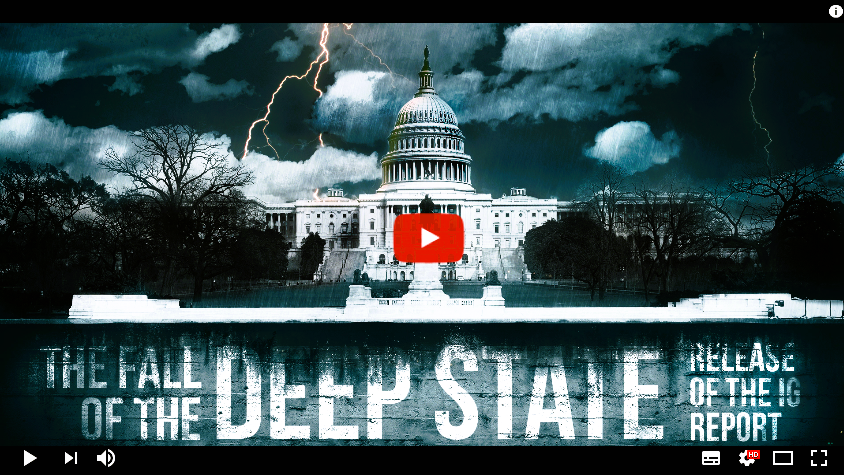MAJOR UPDATE: 2024 Election! PG&E’s Election Day Power Outages Spark Outrage and Raise Alarms of Sabotage Across California! VIDEO
Ready to uncover the truth? Sick of the lies? Join our Telegram Channel now. It’s time for the real story! My gratitude to all my readers!
PG&E’s Election Day power outage plan across 17 California counties threatens to disrupt over 7,000 polling stations, fueling outrage over potential voter suppression and election sabotage. This bold move raises serious concerns about democratic integrity and power grid security. Get the full story and understand what’s truly at stake.
Breaking News: Election Sabotage Suspicions Rise as PG&E Plans Election Day Power Outages
On the eve of one of the most pivotal elections in recent history, PG&E’s announcement of planned power outages across 17 California counties has sparked outrage and widespread speculation. More than 7,000 polling stations are at risk of disruption from these “Public Safety Power-Outages,” raising serious concerns about election sabotage. This is not just a precautionary measure but a direct threat to democratic participation.
Planned Power Cuts: A Cover for Voter Suppression. PG&E claims that high winds and wildfire risks justify the decision to cut power starting at 7 p.m. on Election Day, a measure set to last for days. This announcement, made so close to an important electoral moment, has triggered anger across the state. Thousands of polling stations in key counties such as Alameda, Santa Clara, Sonoma, and others are at risk, threatening voter turnout and election stability.
Counties affected include:
- Alameda
- Butte
- Colusa
- Contra Costa
- Glenn
- Kern
- Lake
- Mendocino
- Napa
- Plumas
- Santa Clara
- Santa Cruz
- Solano
- Sonoma
- Stanislaus
- Tehama
- Yolo

Imagine voters waiting in line for hours, only to have the power cut out just as they reach the booth. For polling staff, these outages could jeopardize ballot processing and critical electronic systems used for voter verification and reporting. PG&E’s assurance that “proactive measures” have been taken to keep polling places operational falls short of easing concerns.
The Shadow of Sabotage: Parallels with Past Attacks. The specter of sabotage is not just theoretical. In 2013, a group of unidentified, highly trained operatives infiltrated a PG&E substation near San Jose, executing an attack capable of plunging the region into darkness. These attackers had an in-depth understanding of the infrastructure, severing underground communication lines and using sniper fire to damage 17 transformers. Despite speculation of North Korean involvement, no perpetrators were ever identified.
The number of counties targeted for power outages coincides with the number of transformers damaged in the 2013 incident. This is not a coincidence. Recent interviews, including those by Tucker Carlson, have reignited discussions about these covert military-style operations and their implications.
The Threat of EMP Attacks: A Hidden Danger. The potential for Electromagnetic Pulse (EMP) attacks adds another layer of concern. Governments globally acknowledge the destructive capability of EMPs, which can dismantle power grids and communication networks. The 1962 U.S. nuclear test “Starfish Prime” demonstrated this power, disabling electrical equipment over 1,400 kilometers away in Hawaii. The Soviet Union extended these findings, conducting EMP tests in Kazakhstan that paralyzed power grids and led to widespread disruption.
Planned outages might be a cover for deeper vulnerabilities in the power grid. California’s energy infrastructure faces threats that make even safety measures appear trivial in comparison.
Election Sabotage: A New Form of Warfare. The timing of these planned outages, intersecting power, politics, and public trust, raises serious alarm. In an era where non-contact warfare encompasses digital attacks, disinformation, and the silent threat of EMPs, PG&E’s actions cannot be dismissed as routine. The implications feed theories that this is an orchestrated effort undermining electoral integrity.
When voters in affected counties find themselves in blackout conditions at the polls, the repercussions extend beyond logistical challenges. Public confidence in the voting process, already fragile in an age marked by disinformation, risks being shattered. This is not just voter suppression; it is a direct assault on democratic norms.
Impacts on Vulnerable Communities. Urban centers like Santa Clara, known for significant minority representation and large immigrant populations, face disproportionate impacts. For these communities, barriers to voting equate to threats against their political representation. Power outages during voting hours will likely depress turnout, skew results, and prompt allegations of systemic voter suppression.
PG&E’s promises that polling stations will remain functional meet deep skepticism. The company’s history, littered with management failures, massive blackouts, and connections to some of California’s most catastrophic wildfires, has left public trust in tatters.
Red Flags: The State’s Readiness. Beyond the immediate threat of Election Day chaos, these planned outages force a reckoning with a larger issue: the fragility of power infrastructure and its potential role in civic destabilization. The ease with which power systems can be targeted, whether by foreign adversaries or domestic actors, raises serious security concerns. EMP scenarios, non-contact military operations, and the 2013 substation attack illustrate vulnerabilities that extend far beyond climate risks.
PG&E’s stated safety rationale underscores an unsettling reality. Foundational systems are not robust enough to withstand threats without compromising essential democratic functions.
Concluding Call to Action: Vigilance and Accountability. Californians must demand full accountability and transparency. If PG&E’s outages are indeed meant to mitigate fire risks, then clear, unequivocal evidence must be provided by state authorities. Protective measures must be prioritized to secure the voting process, from backup power plans to emergency oversight.
This is more than an inconvenience; it is a fight for the sanctity of the vote. Californians—and all Americans—must stay informed, vigilant, and unwavering in defending democracy. The power outages on Election Day should serve as a stark reminder of what is at stake: our voice, our rights, and the essence of freedom itself.












4 Comments
The Assyrian satanists can’t steal the election and sell it…so kill power to voting machines on election day, throw the election out, stay in power, declare martial law and cause as many deaths as possible while telling the most outrageous lies the populace has ever heard…
They will probably try to inject new presidental and VP candidates because these 2 goofballs Harris/Waltz are certifiable nightmares, but then the Brunson case dissolves this criminal government!
Then God shows up and judges the one million or so Assyrian satanist cultists inside the USA and their paid minions! Only God can fix this nightmare created by these satanists.
If you think an election can solve the world’s richest people which are pretty much ALL satan worshipping scumbags from murdering us all…you won’t have the protection you need to survive what’s coming! This is a 100% spiratual battle of Good vs Evil! A gun may somewhat protect you, but only the word of God will/can save you from satan and his minions! This is going to get very bad for non-believers. You will witness things that will turn you to God’s word and prayer. I hope and pray for all who are lost to find God and Jesus before it’s to late. Everyone will soon see there are only 2 clear choices. Good and Evil, the choice is your’s and your’s alone… God bless everyone and help them to see the path God has carved out for each and everyone of us to follow into victory over Evil…
May God bless you too, Mark!
It is going to be a civil war at this point.
Denise, I completely agree with you. May God watch over us and guide us through every step. Stay safe and blessed!